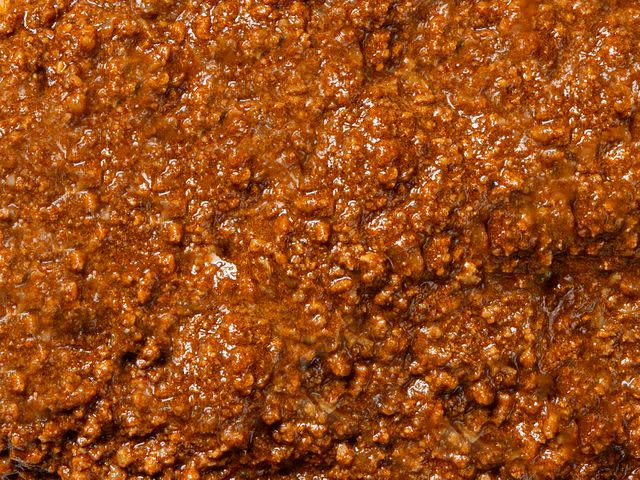Can Food Set Off Metal Detectors? According to Jason Kelce's Vat of Skyline Chili, Yes
- Oops!Something went wrong.Please try again later.
We had questions (so many of them), and we found the answers!

Serious Eats / Amanda Suarez
If you’re an Eagles fan or a Kelce stan (doesn't matter which one), you probably saw this headline recently: Jason Kelce lost his Super Bowl ring during a scavenger hunt in…a tub of Skyline Chili. We, a group of Skyline Chili passionates, had so many questions. And then we learned that some used a metal detector to look for the ring in said tub of chili…which led to even more questions.
“There’s actually metal in Skyline Chili,” Kelce said on an April 17 episode of his podcast New Heights: ”There’s traces of iron within the chili itself.” This, apparently, led the metal detector searching for his ring to go off continuously, and he ultimately wasn’t able to locate it (...he still hasn't, legend has it, at the time of this publication). But was it pieces of metal in the chili or the iron found in beef that was supposedly triggering the metal detector? We wondered: Can food really set off a metal detector? We tapped in some experts to see what they had to say.
According to cookbook author and molecular biologist Nik Sharma, you can’t detect molecular iron in meat. He compared it to blood in humans: “We have iron in our blood. If you put the machine on your hand, is it going to ping?” He notes that iron on a molecular level, whether in humans or animals, can be detected using electrode testing—AKA blood testing—but not metal detectors. Sharma concludes that it’s more likely that the detector was set off by metal embedded in the chili’s container.

Serious Eats / Amanda Suarez
Michael Stepanian, a manager for a liquid chromatography–mass spectrometry department (which studies known and unknown compounds in different molecules) at a Virginia lab, was also skeptical. “Biological iron is not iron from ore,” he says. He notes that grass and soil contain molecular iron, but they won’t set off the detector, just like they wouldn’t in a human.
“I’ve gone through metal detectors and my body doesn’t set it off,” says Stepanian. “Otherwise everyone’s body would light up like a Christmas tree.” Still, a handheld detector is more sensitive than one you’d walk through. It’s more likely, he says, that any metal tracings—iron or otherwise—are from contamination before or during meat processing. A handheld detector would be able to detect even a few tiny particles of metal from a machine, like those from a deli slicer.
Dr. Eric Boring, a chemist at Consumer Reports who oversees food safety testing, also chimed in. “It depends on the food, and how sensitive the device is,” he says. “I'm not sure about the handheld metal detectors, but airport metal detectors have gone off from oysters, which are one of the highest sources of dietary iron and average about eight milligrams of iron per three-ounce serving.” It’s more likely, though, that any metal detected in meat or fish is a piece of metal that animals have consumed before being processed, Stepanian theorized.
We reached out to Skyline Chili with requests for comments, but have yet to hear back. We’ll let you know if and when they respond. In the meantime, don’t tell me you’re not hungry for a bowl of Cincinnati chili right now—because I’d gladly eat it any day, metal detection be damned!!
Get Recipe: Cincinnati Chili
Read the original article on Serious Eats.

